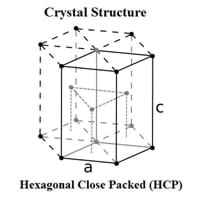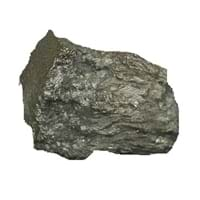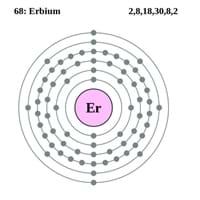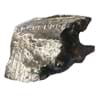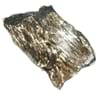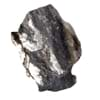What is Erbium?
Periodic Table
0
Symbol
Er 0
Group Number
Not Available 0
Period Number
6 2
Block
f block 0
Element Family
Lanthanide 0
CAS Number
7440520 35
Space Group Name
P63/mmc 0
Space Group Number
194.00 5
Facts
0
Interesting Facts
- Erbium metal is used as alloyed with Vanadium to make it softer.
- Recent studies shows that it is helpful for metabolism.
Sources
Mining 0
History
0
Who Discovered
Carl Gustaf Mosander 0
Discovery
In 1842 0
Abundance
0
Abundance In Universe
2 * 10-7 % 22
Abundance In Sun
~0.0000001 % 26
Abundance In Meteorites
0.00 % 36
Abundance In Earth's Crust
0.00 % 32
Abundance In Oceans
0.00 % 36
Abundance In Humans
Not Available 0
Uses
0
Uses & Benefits
- It has a tendency to get tarnished in the open air, but when alloyed with elements like erbium, vanadium, its hardness levels decreases.
- Its compounds like Erbium oxide is used in safety glasses of welders and metal workers.
Industrial Uses
Chemical Industry 0
Medical Uses
NA 0
Other Uses
Alloys 0
Biological Properties
0
Toxicity
Mildly Toxic 0
Present in Human Body
No 0
In Blood
Not Available 0
In Bone
Not Available 0
Physical
0
Melting Point
1,522.00 °C 28
Boiling Point
2,510.00 °C 44
Appearance
0
Physical State
Solid 0
Color
Silvery White 0
Luster
Lustrous 0
Hardness
0
Mohs Hardness
Not Available 0
Brinell Hardness
814.00 MPa 11
Vickers Hardness
589.00 MPa 19
Speed of Sound
2,830.00 m/s 28
Optical Properties
0
Refractive Index
Not Available 0
Reflectivity
Not Available 0
Allotropes
No 0
α Allotropes
Not Available 0
β Allotropes
Not Available 0
γ Allotropes
Not Available 0
Chemical
0
Chemical Formula
Er 0
Isotopes
0
Known Isotopes
31 8
Electronegativity
0
Pauling Electronegativity
1.24 36
Sanderson Electronegativity
Not Available 0
Allred Rochow Electronegativity
1.11 29
Mulliken-Jaffe Electronegativity
Not Available 0
Allen Electronegativity
Not Available 0
Electropositivity
0
Pauling Electropositivity
2.76 18
Ionization Energies
0
1st Energy Level
589.30 kJ/mol 59
2nd Energy Level
1,150.00 kJ/mol 68
3rd Energy Level
2,194.00 kJ/mol 65
4th Energy Level
4,120.00 kJ/mol 33
5th Energy Level
Not Available 0
6th Energy Level
Not Available 0
7th Energy level
Not Available 0
8th Energy Level
Not Available 0
9th Energy Level
Not Available 0
10th Energy Level
Not Available 0
11th Energy Level
Not Available 0
12th Energy Level
Not Available 0
13th Energy Level
Not Available 0
14th Energy Level
Not Available 0
15th Energy Level
Not Available 0
16th Energy Level
Not Available 0
17th Energy Level
Not Available 0
18th Energy Level
Not Available 0
19th Energy Level
Not Available 0
20th Energy Level
Not Available 0
21st Energy Level
Not Available 0
22nd Energy Level
Not Available 0
23rd Energy Level
Not Available 0
24th Energy Level
Not Available 0
25th Energy Level
Not Available 0
26th Energy Level
Not Available 0
27th Energy Level
Not Available 0
28th Energy Level
Not Available 0
29th Energy Level
Not Available 0
30th Energy Level
Not Available 0
Electrochemical Equivalent
2.08 g/amp-hr 28
Electron Work Function
Not Available 0
Other Chemical Properties
Ionization, Radioactive Isotopes, Solubility 0
Atomic
0
Atomic Number
68 48
Electron Configuration
[Xe] 4f12 6s2 0
Crystal Structure
Hexagonal Close Packed (HCP) 0
Crystal Lattice
HCP-Crystal-Structure-of-Erbium.jpg#100 0
Atom
0
Number of Protons
68 47
Number of Neutrons
99 33
Number of Electrons
68 47
Radius of an Atom
0
Atomic Radius
176.00 pm 18
Covalent Radius
189.00 pm 19
Van der Waals Radius
Not Available 0
Atomic Weight
167.26 amu 43
Atomic Volume
18.40 cm3/mol 25
Adjacent Atomic Numbers
0
Previous Element
79 0
Next Element
75 0
Valence Electron Potential
49.00 (-eV) 29
Lattice Constant
355.88 pm 39
Lattice Angles
π/2, π/2, 2 π/3 0
Lattice C/A Ratio
1.57 17
Mechanical
0
Density
0
Density At Room Temperature
9.07 g/cm3 42
Density When Liquid (at m.p.)
8.86 g/cm3 23
Tensile Strength
Not Available 0
Viscosity
Not Available 0
Vapor Pressure
0
Vapor Pressure at 1000 K
0.00 (Pa) 20
Vapor Pressure at 2000 K
Not Available 0
Elasticity properties
0
Shear Modulus
28.30 GPa 25
Bulk Modulus
44.40 GPa 27
Young's Modulus
69.90 GPa 29
Poisson Ratio
0.24 28
Other Mechanical Properties
Malleable 0
Magnetic
0
Magnetic Characteristics
0
Specific Gravity
9.07 32
Magnetic Ordering
Paramagnetic 0
Permeability
Not Available 0
Susceptibility
Not Available 0
Electrical Properties
0
Electrical Property
Conductor 0
Resistivity
0.86 nΩ·m 63
Electrical Conductivity
0.01 106/cm Ω 53
Electron Affinity
50.00 kJ/mol 21
Thermal
0
Specific Heat
0.17 J/(kg K) 34
Molar Heat Capacity
28.12 J/mol·K 11
Thermal Conductivity
14.50 W/m·K 55
Critical Temperature
Not Available 0
Thermal Expansion
12.20 µm/(m·K) 31
Enthalpy
0
Enthalpy of Vaporization
261.00 kJ/mol 35
Enthalpy of Fusion
17.20 kJ/mol 15
Enthalpy of Atomization
314.00 kJ/mol 33
Standard Molar Entropy
73.10 J/mol.K 11
|
||
|
||
|
